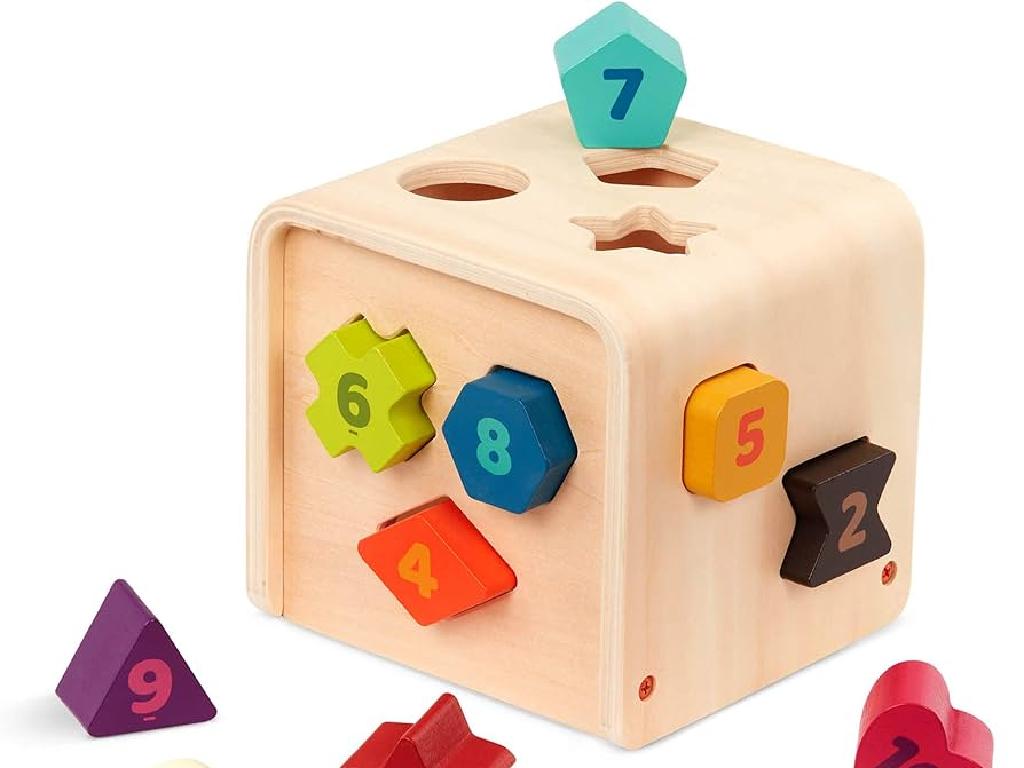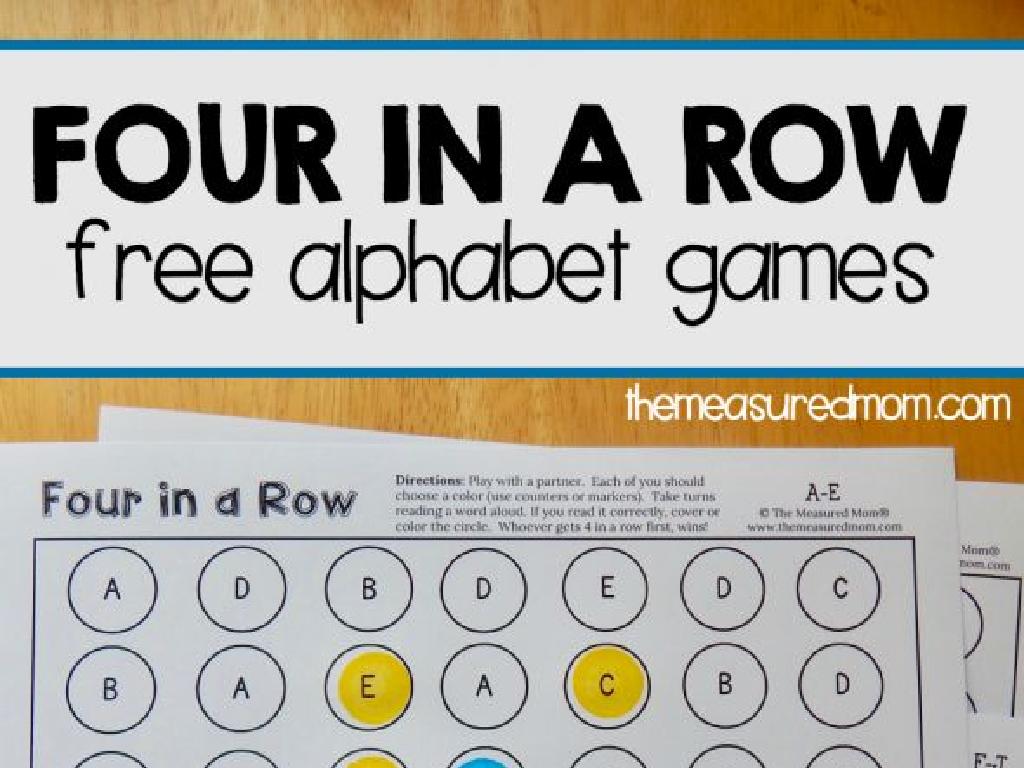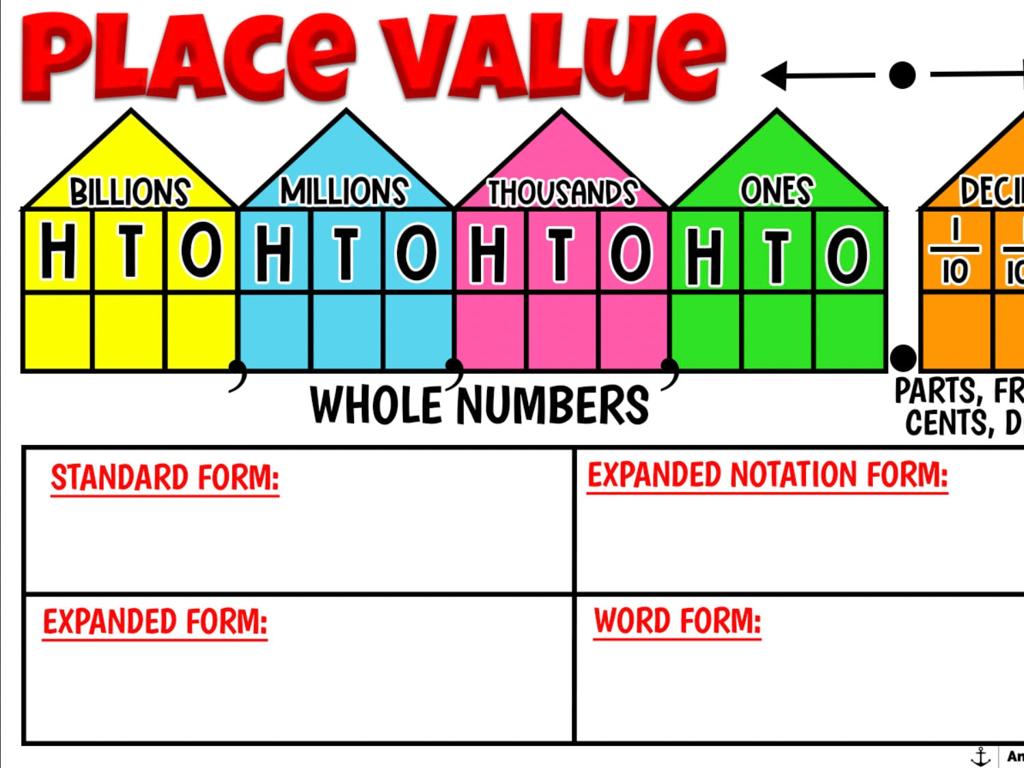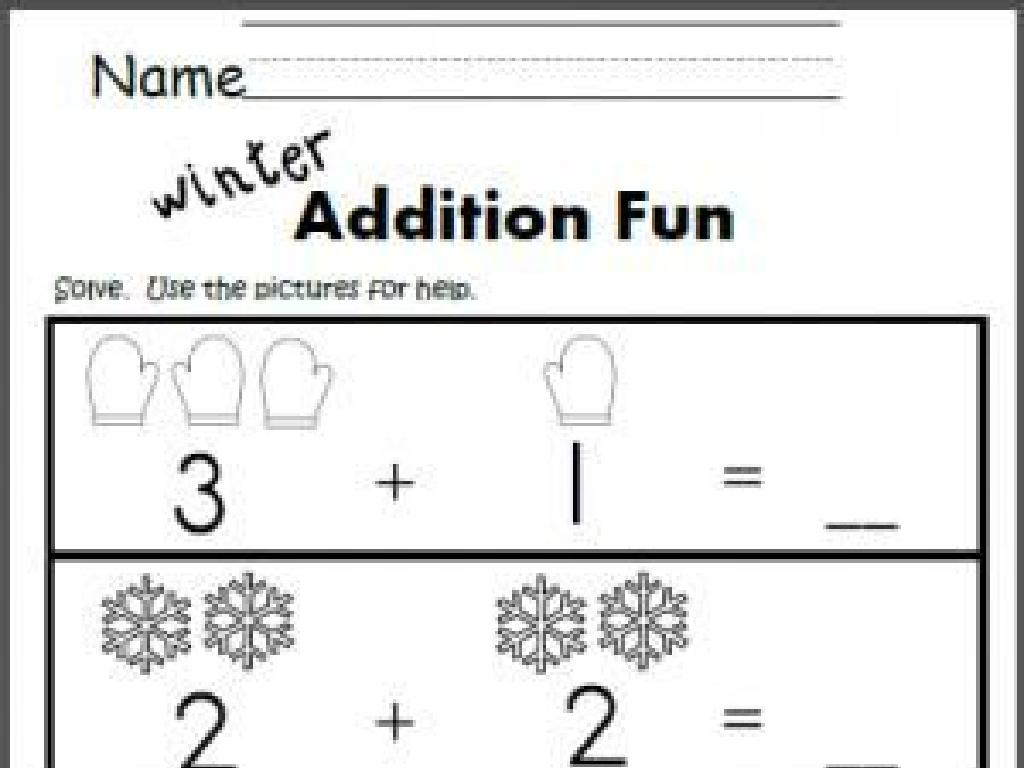Find All The Factor Pairs Of A Number
Subject: Math
Grade: Sixth grade
Topic: Number Theory
Please LOG IN to download the presentation. Access is available to registered users only.
View More Content
Exploring Factor Pairs in Number Theory
– What are factors?
– Factors are numbers we can multiply to get another number.
– Finding factor pairs
– To find factor pairs, list all numbers that divide evenly into your target number.
– Significance of factor pairs
– Knowing factor pairs simplifies math problems like simplifying fractions.
– Real-life application
– Factor pairs are used in grouping objects and understanding shapes.
|
This slide introduces the concept of factors and their importance in both mathematical theory and practical applications. Begin by explaining that factors are the building blocks of numbers, which can be multiplied together to result in a target number. Demonstrate how to find all factor pairs for a given number by listing the pairs that multiply to that number without leaving a remainder. Emphasize the usefulness of understanding factor pairs in simplifying fractions, solving division problems, and even in real-life situations such as arranging objects into equal groups or analyzing geometric shapes. Encourage students to think of factor pairs as a tool that helps unlock the mysteries of numbers.
Exploring Factors of Numbers
– Define a factor in math
– A factor is a number that divides another without leaving a remainder.
– Factors as recipe ingredients
– Just as ingredients combine to make a dish, factors combine to form a number.
– Examples of number factors
– For 12, factors include 1, 2, 3, 4, 6, 12.
– Finding factor pairs
– Factor pairs for 12 are (1,12), (2,6), and (3,4).
|
Begin the lesson by defining a factor as a number that can divide another number evenly, with no remainder. Use the analogy of ingredients in a recipe to help students understand that factors are the ‘building blocks’ of numbers. Provide concrete examples by listing the factors of a familiar number, such as 12, and then show how these factors pair up to multiply back to the original number. This will set the foundation for students to practice finding all the factor pairs for given numbers as a class activity.
Pair Them Up: Factor Pairs
– Understanding Factor Pairs
– Two numbers multiplied to get a product
– Every number’s dance partner
– Steps to find Factor Pairs
– Start with 1 and the number. Check divisibility for each integer in between
– Practice with examples
– Use 36: 1×36, 2×18, 3×12, 4×9, 6×6
|
This slide introduces the concept of factor pairs to the students. Begin by explaining that a factor pair consists of two numbers that, when multiplied together, result in a given number, much like dance partners moving together to create a dance. Emphasize that every number has at least one factor pair, which is the number itself and one. Demonstrate the process of finding all factor pairs by starting with the smallest factor (1) and the number itself, and then testing each integer in between for divisibility. Use 36 as an example to show all its factor pairs. Encourage students to practice with different numbers and to recognize that some numbers, like squares, have a middle pair where both factors are the same. This activity will help solidify their understanding of factors and multiplication.
Let’s Find Factor Pairs Together!
– Example: Factor pairs of 12
– 1×12, 2×6, 3×4 are factor pairs of 12
– Use factor trees or division
– Break down numbers to find all pairs
– Organize pairs least to greatest
– List pairs: (1,12), (2,6), (3,4)
– Practice with different numbers
|
This slide introduces students to the concept of finding factor pairs for a given number, using 12 as an example. A factor pair consists of two numbers that, when multiplied together, give the original number. Students can use factor trees or simple division to find all possible pairs. Emphasize the importance of organizing these pairs in ascending order, which helps in identifying all unique pairs and ensures none are missed. After explaining the concept, encourage students to practice with different numbers to solidify their understanding. Provide additional examples and guide them through the process to ensure they grasp the method for finding factor pairs.
Your Turn: Find the Factor Pairs of 16
– Activity: Identify factor pairs for 16
– Factors of 16: (1,16), (2,8), (4,4)
– Share findings with classmates
– Explain how you found the factors
– Discuss various discovery methods
– Did you use division, multiplication, or a factor tree?
– Reflect on the activity
– What did you learn from this exercise?
|
This slide is designed for an interactive class activity where students will engage in finding all the factor pairs of the number 16. Students should be encouraged to use different methods such as division or drawing a factor tree to find the factors. After the individual work, they will share their answers with the class to foster a collaborative learning environment. Discussing the different methods used will help students understand various approaches to problem-solving. The reflection part of the activity will help them internalize the concept of factors and the importance of understanding different methods to find them. As a teacher, be prepared to guide students who may struggle and provide additional examples if necessary.
Real-World Application of Factor Pairs
– Factor pairs in daily life
– Example: Party seat arrangement
– If 12 guests are coming, arrangements could be 1×12, 2×6, or 3×4 seats
– Using factor pairs in problem-solving
– Helps to organize objects or manage tasks efficiently
– Practice with real examples
|
Understanding factor pairs is not just a mathematical exercise; it has practical applications in everyday life. For instance, when arranging seats for a party, knowing the factor pairs of the total number of guests can help in organizing the space efficiently. If 12 guests are coming, the seating can be arranged in rows of 1×12 (one long table), 2×6 (two tables with 6 guests each), or 3×4 (three tables with 4 guests each). This concept can be applied to various scenarios, such as dividing up equal portions of food, creating teams for games, or distributing items evenly. Encourage students to think of other situations where factor pairs could be useful and to practice finding factor pairs for different numbers.
Class Activity: Factor Pair Challenge
– Find all factor pairs of 24
– Factors of 24: (1,24), (2,12), (3,8), (4,6)
– Work in pairs for collaboration
– Use multiplication to find pairs
– Remember, if a x b = 24, then (a, b) is a factor pair
– Present findings to the class
|
This activity is designed to promote teamwork and understanding of factor pairs. Students will pair up and use multiplication to find all the factor pairs of the number 24. Encourage them to start with 1 and the number itself as a factor pair and work their way inwards. They should check each number up to 12 to see if it is a factor of 24. Once they have completed the task, each pair will present their findings to the class. This will help reinforce their understanding and allow them to see if they missed any pairs. Possible variations for different pairs could include finding factor pairs for different numbers, such as 36 or 48, to ensure a diverse range of examples are covered in the class discussion.
Review and Reflect: Factor Pairs Mastery
– Recap on finding factor pairs
– Remember, factor pairs multiply to the target number
– Why mastering factors matters
– Understanding factors is key in math, especially in fractions and algebra
– Q&A session for doubts
– Ask questions now to help with your homework and tests
– Practice makes perfect
|
This slide aims to consolidate the students’ understanding of finding factor pairs of a number, emphasizing the importance of mastering this skill for future mathematical concepts. Begin with a brief recap of the method to find factor pairs, ensuring students can identify sets of two numbers that, when multiplied, give the original number. Highlight how this skill is foundational for understanding fractions, divisibility, and algebra. Encourage students to ask questions to clarify any doubts, providing a safe space for them to express uncertainties. Conclude with the message that consistent practice will lead to proficiency in finding factor pairs, which is a valuable tool in their math toolkit.
Homework: Mastering Factor Pairs
– Complete the factor pairs worksheet
– Practice with numbers given; list all factor pairs
– Mini-quiz on factor pairs next class
– Review tonight’s worksheet to prepare for the quiz
– Extra: Factor pairs of a three-digit number
– Challenge yourself with numbers like 100, 250, or 400
|
This homework assignment is designed to reinforce the concept of factor pairs which was taught in class. The worksheet provides a structured practice opportunity, allowing students to apply their knowledge to find all factor pairs for the assigned numbers. Emphasize the importance of preparing for the mini-quiz by reviewing the worksheet and understanding the methodology behind finding factor pairs. For advanced students, the extra challenge aims to extend their learning by applying the concept to larger, three-digit numbers. This will not only prepare them for the quiz but also deepen their understanding of number theory. Encourage students to work systematically and check their work for accuracy.






